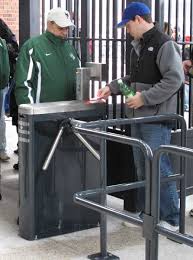The Rise of Turnstiles in Modern Access Control

Introduction
Turnstiles have emerged as a critical component in access control systems across various sectors, including transportation, entertainment, and security. With the growing need for efficient management of crowds and enhanced security measures, the importance of turnstiles has surged, especially in the wake of the COVID-19 pandemic which has heightened awareness around health and safety protocols.
The Role of Turnstiles in Access Control
In recent years, turnstiles have proven indispensable, particularly in high-traffic areas. They provide a physical barrier that enables organisations to control who enters and exits a facility. With technology advancements, modern turnstiles now incorporate biometric systems, RFID technology, and even facial recognition features, which offer a secure and efficient method for managing access.
Case Studies of Turnstile Implementation
Many cities have seen the implementation of turnstiles in public transport systems, such as the London Underground, where they help ensure that only paying customers access services. Additionally, entertainment venues, such as stadiums and concert halls, have adopted turnstiles to manage crowds and enhance the visitor experience. For example, the introduction of smart turnstiles at the O2 Arena has significantly expedited entry times, reducing congestion during events.
Innovations Shaping the Future
The advent of smart technology plays a significant role in the evolution of turnstiles. Integrated systems now allow for real-time data analytics, enabling organisations to monitor entry patterns and streamline their operations. Contactless technologies, which gained popularity during the pandemic, continue to be a focus, as they not only enhance user experience but also promote hygiene by reducing physical contact.
Challenges and Considerations
While turnstiles provide numerous benefits, challenges remain in their implementation. Organisations must ensure that turnstiles are accessible to all individuals, including those with disabilities. Moreover, the associated costs and the need for regular maintenance can be substantial. These factors necessitate a thorough assessment during the planning phase to ensure successful integration.
Conclusion
As we move towards a post-pandemic world, the demand for turnstile solutions is likely to continue growing. Their ability to enhance security, streamline crowd management, and adapt to technological advancements makes them an invaluable asset in various environments. Businesses and public entities looking to improve safety and operational efficiency should consider the strategic deployment of turnstiles in their facilities.








